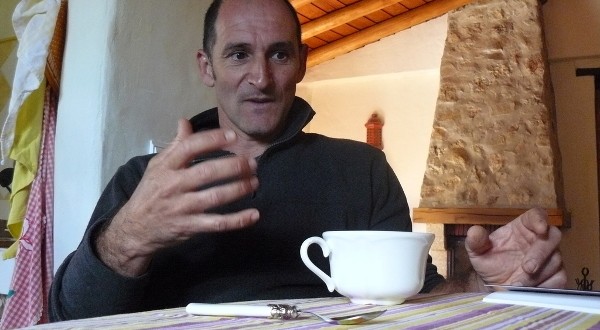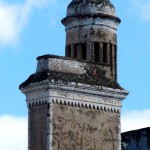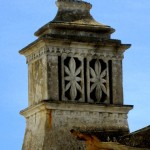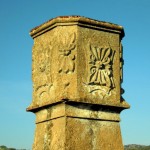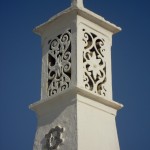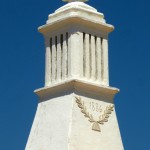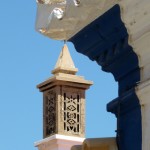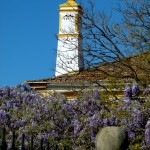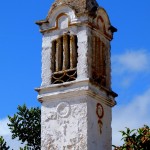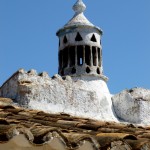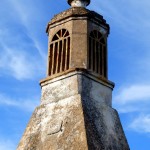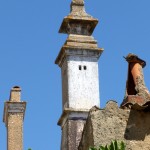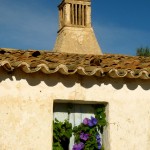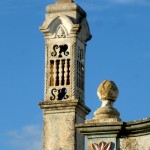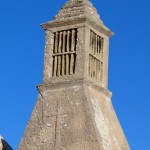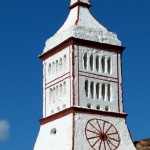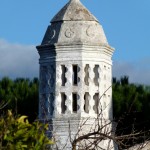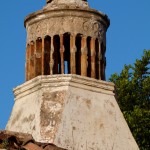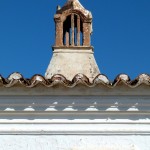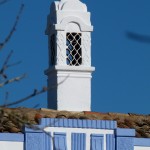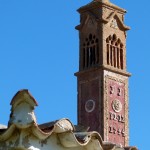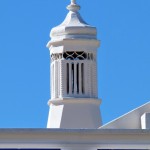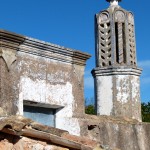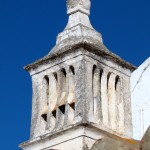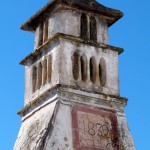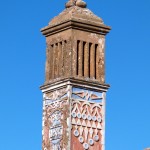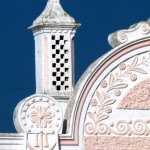
A nicely decorated chimney has become a kind of Algarve trademark. It is a form of expression through which the people of the Algarve capture the working techniques of our forebears. The different appearances given to the chimneys, the different shapes, colours and styles, ensure that Algarve people are seen to be both tasteful and refined. The more distinctive and ostentatious the chimneys, the better. Chimneys in the shape of balloons and cones, with a grille or decorated with a series of tiles, and in a wide range of colours, attract the attention of onlookers.
This sight on the rooftops suddenly awoke the interest of a number of fans of the history and architecture of chimneys, such as 44-year-old Júlio Guerreiro Machado, who was born in Lisbon. He grew up in Sintra and used to come south on holiday throughout his childhood; he has family roots here on his mother’s side, and calls himself a “chimney hunter”.
“A person who is passionate about, and proud of things with which you can identify,” he lives in the Algarve at present and takes photographs of all types of chimney: his aim is to keep the traditions and customs of his forebears alive. This history is revealed through photography in order to “preserve the past” and record “the most photogenic side of what is in danger of collapsing.”
He is passionate about history, and says that he is “someone who pays attention to what I see” and, bit by bit, he has been discovering the history of the Algarve chimneys which appeared “during the Salazar dictatorship. There was a need to find something that was most typical of each region. To use this as a symbol, and I think that the chimney has been used as a symbol since that period. The chimney became like an Algarve trademark during the 1940s, 50s and 60s.”
The love of chimneys became established in people, and little by little they could afford to buy them. “They were an interesting way of showing a degree of power. They showed the power that people thought they had through something high and they had a particular fondness for being different. The Algarve is like that, people needed to do something different from their neighbour.”
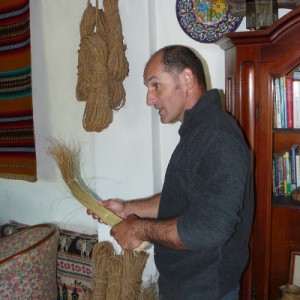
Júlio Machado lives from the traditions of the past and pursues it as a hobby. Apart from photography, he always tries to create new pieces from materials that were used in the past. And which have now fallen into disuse, in order to reuse products and showcase the traditions. The creator uses antique pieces that have come from the rubbish, and he reuses them, turning them into pieces of art and giving them a new lease of life.
Wicker is another of the materials he uses, to make trays, lampshades and baskets. In the past, since the Roman era, it was used a lot and it fell into disuse as the years passed. The interlaced material makes it tough and durable, and makes quality products.
Júlio Machado talks proudly of a past history where “I don’t feel that I have the right to destroy the past; I am just an add-on to history.”
 Eco123 Revista da Economia e Ecologia
Eco123 Revista da Economia e Ecologia

